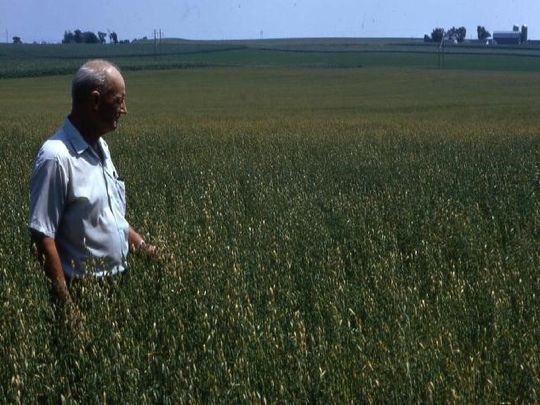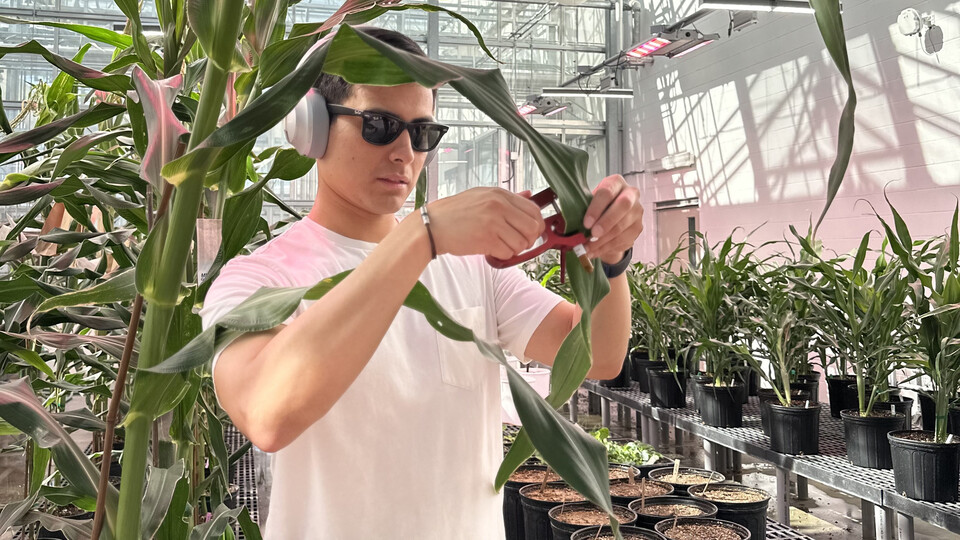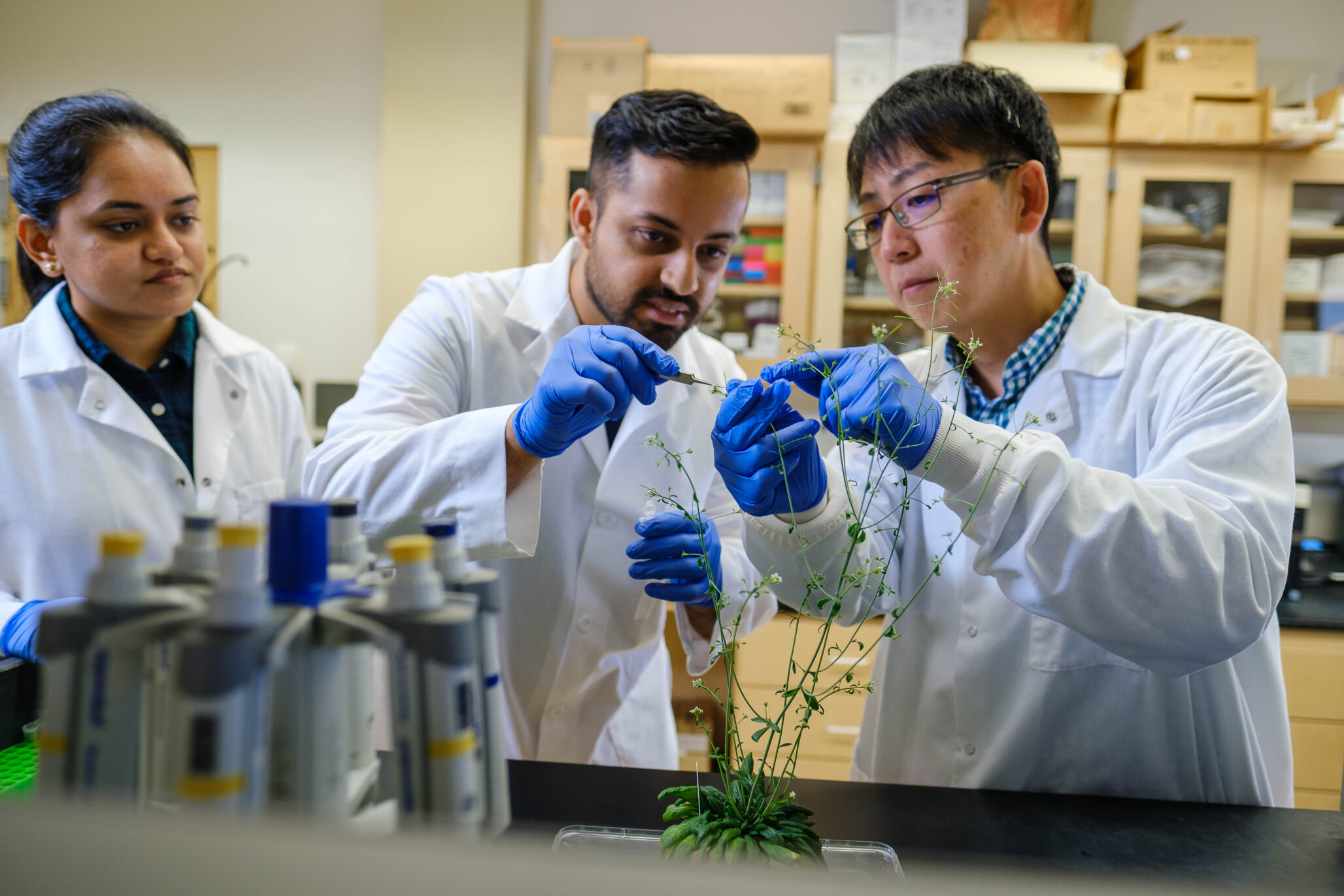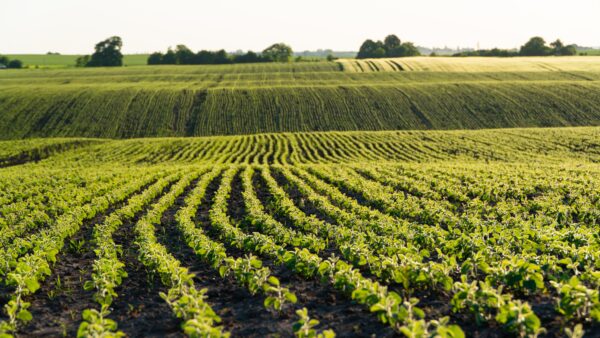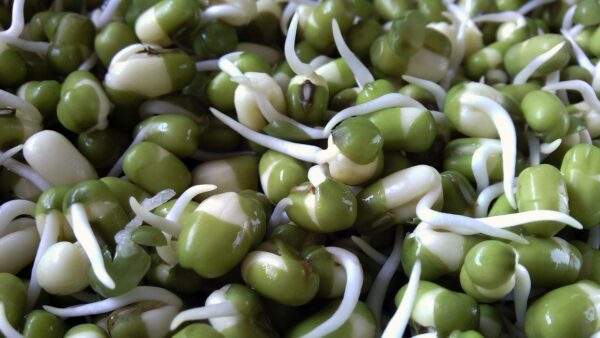When the University of Wisconsin took over ownership of a greenhouse and plant breeding/transformation facility in Middleton earlier this year, it increased the plant transformation sector of the public sector by at least three-fold, says agronomist Shawn Kaeppler. “It was a step change in U.S. agriculture,” he tells members of the Wisconsin Crop Improvement Association who were at the facility for their annual meeting last week.
The facility began in the early 1980s as Cetus of Madison which later merged with a California biotech company and was operated as Agracetus until the mid 1990s when Monsanto purchased the greenhouses and laboratories. Monsanto used the research station for 20 years to work on putting novel genes into commercial plants.
An electric “gene gun” was invented at the lab and was used to insert the first glyphosate-resistance gene into soybeans there. The gene gun made the Middleton research station a hub for plant transformation, everything from pine trees to peanuts, soybeans and corn to cotton and canola were transformed here. That original gene gun is now in the Smithsonian.
By 2015 Monsanto was looking to consolidate its research near its St. Louis headquarters and began talking to the UW’s College of Agriculture and Life Sciences about donating the site. All the details were being worked out about a year ago and in early 2017 UW officials held a ribbon-cutting to officially open the Wisconsin Crop Innovation Center.
Mike Petersen, who is associate director of the WCIC, said the donation of the facility has opened new doors for agronomists and other scientists working on plant transformation. They have been in talks with the Gates Foundation, which is interested in improvements that could be made to African and Asian crops, and scientists have already taken the first steps to show the philanthropists what can be accomplished.
He says work continues with gene gun technology but also with another method of getting novel genes, like drought tolerance, into plants. Agrobacterium can be used to inject new DNA into plants, but it comes with some regulatory hurdles and isn’t very useful in certain plant species.
Success rates in rice can range from 30-70 percent with this method, he said, but in corn it is down in the 5-6 percent range.
The “Holy Grail” of plant transformation is getting corn to fix nitrogen and Petersen said work is ongoing on that project.
Valuable facility
As he showed members of the crop improvement association through the labs and greenhouses, Petersen noted that the facility was valued by Monsanto at $12 million as a donation, but if the state were to build it new on campus, it would probably cost at least $50-60 million, and maybe more. In addition to the bricks and mortar, Monsanto also left some equipment to the University, including sophisticated microscopes that can be used to identify genes that are marked with fluorescence.
Petersen says the work of inserting new genes into plants is similar to plant breeding in that researchers may put hundreds of genes into plants per week, but they don’t know if those plants are going to work until they are multiplied in field trials. “It can be year four, five or six years before you truly know. And it can be 10-12 years before they get to the market.”
He started working at the facility as an intern and has been here through several ownership changes and through Monsanto’s tenure. He is now one of seven former Monsanto employees who stayed when the donation was made.
While the original model gene gun used about “one quarter bolt of lightning” to transform plants’ genetics and was a six foot by ten foot unit, today’s gene guns use helium pressure and fit on a table top, about the size of a coffeemaker, he said.
The crop center includes 23 separate greenhouse areas ranging from 600 square feet to 2,000 square feet and feature automatic watering and backup generators.
Transforming elite cultivars
Kaeppler, director of the center, says that in the 11 months of operation, the labs have transformed several elite cultivars and created several experimental lines. Work with the Gates Foundation involves improving cowpeas, a staple in African food systems. “They are interested in insect resistance.”
He noted that patents on gene guns are expiring in the next year or two which may change things in the world of crop improvement. Researchers are also turning to gene editing as a way to transform plants. This kind of work can be used to fix a gene sequence and put it back to what it’s supposed to be or insert something new.
Some seed corn developers are using gene editing to duplicate natural mutations in the corn genome to produce things like waxy corn, he said. Some gene editing research is aimed at altering amino acids to achieve herbicide resistance, increasing crops’ drought resistance and knocking out diseases like powdery mildew in barley.
Kaeppler notes that gene editing can enhance the normal breeding process. “If you know what to target, you can make progress very quickly.”
Crop Improvement Association
Tony Klink, general manager of the Wisconsin Crop Improvement Association, says that the organization was founded in 1901 by University of Wisconsin staff to insure that varieties of seed purchased by farmers were pure. Wisconsin led the way before there was even a national program, which has since followed.
Today the organization has five full-time employees to do lab testing for things like seed germination and purity. His staff tests 6,000-7,000 seed samples a year and Klink said Wisconsin Certified Seed is nationally recognized as a symbol of excellence resulting in seed that meets rigorous conditioning standards.
Part-time workers, often retired agriculture teachers or county agents all around the state, are hired seasonally to do field inspections on behalf of the Crop Improvement Association. The value of this, he said, is that field inspections are done by an unbiased, professional third party.
The association’s work meets standards set by the Association of Official Seed Certifying Agencies and the North American Invasive Species Management Association.
The Crop Improvement Association works with the Wisconsin Foundation Seed program. Patrick LeMahieu, manager of Foundation Seed, told the members that his program has stopped production of large volumes of seed and will now out-source to seed producers around the state. New releases will be sub-licensed.
These changes are being made to take advantage of economies of scale, he said. Certified seed production in 2017 was 2,664 acres of oats, 157 acres of barley and 431 acres of wheat.
Source: Wisconsin State Farmer


